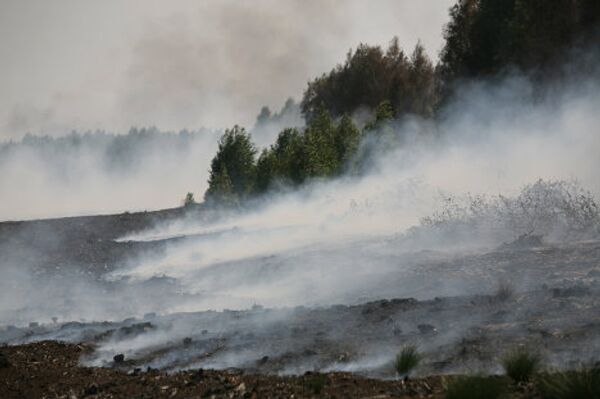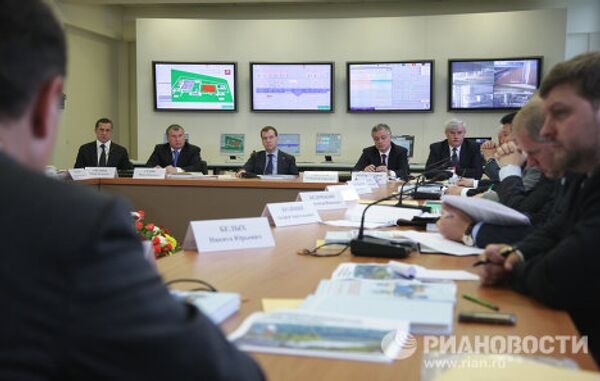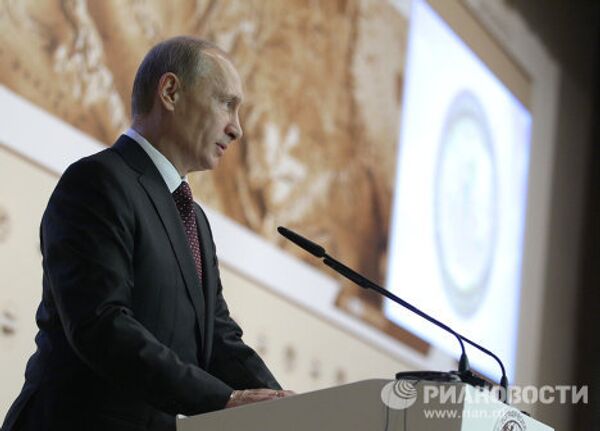The summer of 2010 brought Russia abnormal heat, smog and fierce wildfires. This all resulted from the anticyclone that hovered over European Russia for an unprecedentedly long period from June 21 until August 19.

In January, the Russian government dropped the production of pulp, paper and cardboard from the list of activities prohibited in the Baikal nature reserve, paving the way for the Baikal pulp and paper mill to resume operations.
In July, the facility went back into production after a hiatus of a year and a half, discharging its waste into the lake. This decision provoked outrage among environmental organizations and UNESCO because Lake Baikal is listed as a world heritage site. That was why, in late October, Prime Minister Vladimir Putin issued an instruction stipulating that the pulp and paper mill should switch over to a closed water cycle in 2011.
In July, the facility went back into production after a hiatus of a year and a half, discharging its waste into the lake. This decision provoked outrage among environmental organizations and UNESCO because Lake Baikal is listed as a world heritage site. That was why, in late October, Prime Minister Vladimir Putin issued an instruction stipulating that the pulp and paper mill should switch over to a closed water cycle in 2011.

The plans to build a new Moscow-St. Petersburg highway through the Khimki Forest in the suburbs of Moscow met with strong protests from local residents and environment activists. After the pro-forest activists clashed with road-builders in August, President Dmitry Medvedev instructed the government to suspend all construction work and hold additional public and expert discussions about the project.
The government commission eventually approved the original route of the highway through the Khimki Forest but promised to compensate for the trees that would be felled to make way for it. Construction work looks set to commence on January 15, 2011, Moscow Region Governor Boris Gromov said.
The government commission eventually approved the original route of the highway through the Khimki Forest but promised to compensate for the trees that would be felled to make way for it. Construction work looks set to commence on January 15, 2011, Moscow Region Governor Boris Gromov said.

3/8
© RIA Novosti . Alexander Kryazhev
The summer of 2010 brought Russia abnormal heat, smog and fierce wildfires. This all resulted from the anticyclone that hovered over European Russia for an unprecedentedly long period from June 21 until August 19. For two months the central part of Russia was in the grip of a drought: not a single drop of rain fell and temperatures climbed ever higher to record-breaking levels. Fierce wildfires killed large numbers of birds, many forests and ecosystems across Russia but some good came out of it: government officials will be sure not to ignore peat bogs ever again. The overall nationwide damage to the flora and fauna is preliminarily estimated at 30 billion rubles.
The Russian government set aside 300 million rubles for the Moscow Region, where wildfires raged all summer and everything was shrouded in smog, to put towards watering the peat bogs. In total, the Moscow Region now has to water more than 70 peat bogs with a total combined area of over 60,000 hectares. The corresponding federal targeted program may total between 20 and 25 billion rubles with the program for the Shatura district alone reaching 4.5 billion rubles.
The Russian government set aside 300 million rubles for the Moscow Region, where wildfires raged all summer and everything was shrouded in smog, to put towards watering the peat bogs. In total, the Moscow Region now has to water more than 70 peat bogs with a total combined area of over 60,000 hectares. The corresponding federal targeted program may total between 20 and 25 billion rubles with the program for the Shatura district alone reaching 4.5 billion rubles.

Earth Hour, March 27, 2010, became Russia’s largest environmental event ever. Dozens of Russian cities and towns joined this WWF initiative and turned their lights and electric appliances off for an hour to highlight the issue of climate change.

Speaking at a State Council presidium meeting on May 27, 2010, Russian President Dmitry Medvedev called for the acceleration of the process to establish an integrated government environment monitoring system that would codify the country’s environmental regulations and “put an end to environmental nihilism.”

In late December 2010 and early January 2011 WWF Russia will introduce male and female Persian leopards, transported from Iran and Turkmenistan, to the Sochi National Park, to each other.
Persian leopards used to be widespread in the Caucasus, inhabiting virtually all of the mountainous region. After 1917, the predator’s last safe habitat, the well-guarded Kuban grand-ducal hunting area, was destroyed. In 1924, the Caucasus nature reserve, which exists to this day, was established but poaching continued on a massive scale through the 1920s and 1930s, not to mention during World War II.
By the 1950s only a few leopards survived in the entire Caucasus region. Today only leopards that have accidentally wandered over from northern Iran can be seen in Russia’s Caucasus.
Persian leopards used to be widespread in the Caucasus, inhabiting virtually all of the mountainous region. After 1917, the predator’s last safe habitat, the well-guarded Kuban grand-ducal hunting area, was destroyed. In 1924, the Caucasus nature reserve, which exists to this day, was established but poaching continued on a massive scale through the 1920s and 1930s, not to mention during World War II.
By the 1950s only a few leopards survived in the entire Caucasus region. Today only leopards that have accidentally wandered over from northern Iran can be seen in Russia’s Caucasus.

Fall 2010 saw a wide variety of environmental forums and conferences. In September, politicians, economists, polar researchers and scholars came together in Moscow at the international forum The Arctic: Territory of Dialogue organized by the Russian Geographical Society. Participants discussed environmental and political issues facing the Arctic, environmental conservation in the region and the problems experienced by the indigenous peoples of the North.
Photo: September 23, 2010. Russian Prime Minister Vladimir Putin speaking at the International Arctic Forum “The Arctic: Territory of Dialogue.”
Photo: September 23, 2010. Russian Prime Minister Vladimir Putin speaking at the International Arctic Forum “The Arctic: Territory of Dialogue.”

In November 2010, representatives from 13 countries gathered in St. Petersburg to look into another crucial environmental issue – the conservation of the tiger. Over the past century, the tiger population has decreased from 100,000 to 3,200 and the animal’s habitat has shrunk to 7% of its initial area.
Photo: November 23, 2010. Russian Prime Minister Vladimir Putin (third left) and Chinese Premier Wen Jiabao (second left) at the International Tiger Conservation Forum.
Photo: November 23, 2010. Russian Prime Minister Vladimir Putin (third left) and Chinese Premier Wen Jiabao (second left) at the International Tiger Conservation Forum.



